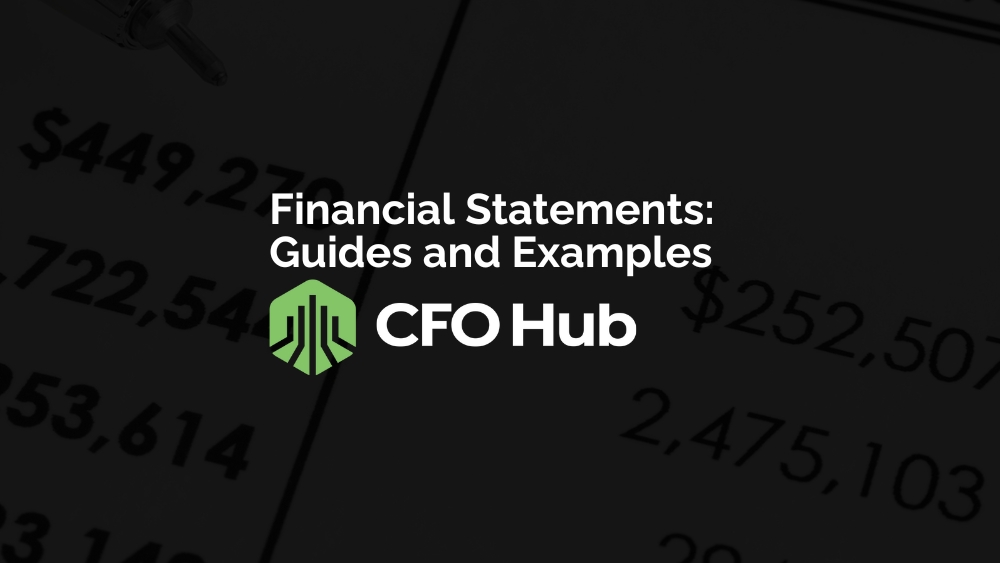Financial Statements: Guides and Examples
Financial statements show how well your business performs financially, yet many business owners struggle to interpret these documents. According to a QuickBooks survey, only about half of small business owners feel comfortable reading and understanding these financial statements.
Knowing how to read these financial statements can help you see the true health of your business and spot problems before they become crises. Here, you’ll find clear explanations and examples of financial statements that will help you keep a closer eye on your company’s financial health.
What Are Financial Statements
Financial statements are business documents that track a company’s income and expenses over a specific period of time. Business owners use them to track performance, make strategic decisions, identify trends, and communicate financial health to investors and stakeholders.
Unlike basic bookkeeping records that just track individual transactions, financial statements organize and analyze this data to find important patterns. They turn hundreds or thousands of individual entries into clear summaries that anyone can understand. These statements also help businesses comply with tax requirements and regulatory obligations.
The Three Main Financial Statements
Fortunately, you don’t need an MBA or a Master’s in finance to understand your company’s financial statements. All you need is to understand three core financial statements that work together to describe a company’s financial situation in vivid detail. Each statement has a different purpose, and you need all three to see the big picture of your company’s financials.
Income Statement (Profit and Loss)
The income statement shows how much money a business made or lost during a specific period, like a month or quarter. This statement starts with total revenue and subtracts all expenses to arrive at net income or loss. It clearly shows whether a company is making a profit and how efficiently it converts sales into actual profit.
Business owners use income statements to identify their most profitable products or services and spot areas where costs might be too high. The statement also helps predict future performance by showing trends in revenue growth and expense management. Investors love this statement because it shows a company’s ability to make a profit.
Income statement example
Take a look at this example of a small retail clothing store’s income statement for the month of January:
| Revenue | Amount |
| Sales | $50,000 |
| Returns | ($2,000) |
| Net Revenue | $48,000 |
| Expenses | Amount |
| Cost of Goods Sold | $24,000 |
| Rent | $3,000 |
| Salaries | $8,000 |
| Utilities | $500 |
| Marketing | $1,500 |
| Total Expenses | $37,000 |
| Net Income | $11,000 |
Balance Sheet
The balance sheet captures your company’s financial position at one specific moment in time. It shows everything your business owns and everything it owes, plus the remaining value that belongs to the owners.
This statement follows the fundamental accounting principle of assets = revenue + equity. The balance sheet helps you understand your company’s financial stability and ability to meet obligations. It tells you whether you have enough resources to expand operations or weather unexpected challenges.
Balance Sheet Example
Here’s an example of a small technology consulting firm’s balance sheet as of December 31:
| Assets | Amount |
| Cash | $25,000 |
| Accounts Receivable | $15,000 |
| Equipment | $10,000 |
| Total Assets | $50,000 |
| Liabilities | Amount |
| Accounts Payable | $5,000 |
| Business Loan | $20,000 |
| Total Liabilities | $25,000 |
| Equity | Amount |
| Owner’s Equity | $25,000 |
| Total Liabilities + Equity | $50,000 |
Cash Flow Statement
The cash flow statement monitors the actual movement of money into and out of your business during a specific period. While your income statement might show a profit, you could still face cash shortages if customers pay slowly or you’ve invested heavily in inventory.
This statement organizes cash movements into three distinct categories:
- Operating cash flow: Shows money from your core business activities, like selling goods and services.
- Investing cash flow: Tracks purchases or sales of long-term assets like equipment.
- Financing cash flow: Covers money from loans or credit.
Cash Flow Statement Example
See this example of a small manufacturing company’s cash flow statement for the quarter ending March 31:
| Operating Activities | Amount |
| Cash from customers | $120,000 |
| Cash paid to suppliers | ($70,000) |
| Cash paid for salaries | ($30,000) |
| Cash paid for rent | ($9,000) |
| Net Cash from Operations | $11,000 |
| Investing Activities | Amount |
| Equipment purchase | ($15,000) |
| Net Cash from Investing | ($15,000) |
| Financing Activities | Amount |
| Back loan proceeds | $20,000 |
| Net Cash from Financing | $20,000 |
| Net Increase in Cash | $16,000 |
How CFO Hub Can Help
CFO Hub helps businesses prepare accurate financial statements and interpret them to make strategic decisions. Even if you don’t have a finance team, our fractional CFO services can help you take your business’s raw data and turn it into guides that can help your business expand and weather financial storms.
Jack Perkins, CPA founded CFO Hub to provide strategic finance and accounting services to enterprises of all sizes. Prior to founding CFO Hub, Jack served as the CFO and Controller of rapidly growing enterprises in California. Jack's written content has been featured in Forbes, Entrepreneur, and several other notable publications.
Visit Jack's Expert Hub to learn more about his experience and read more of his editorial content

